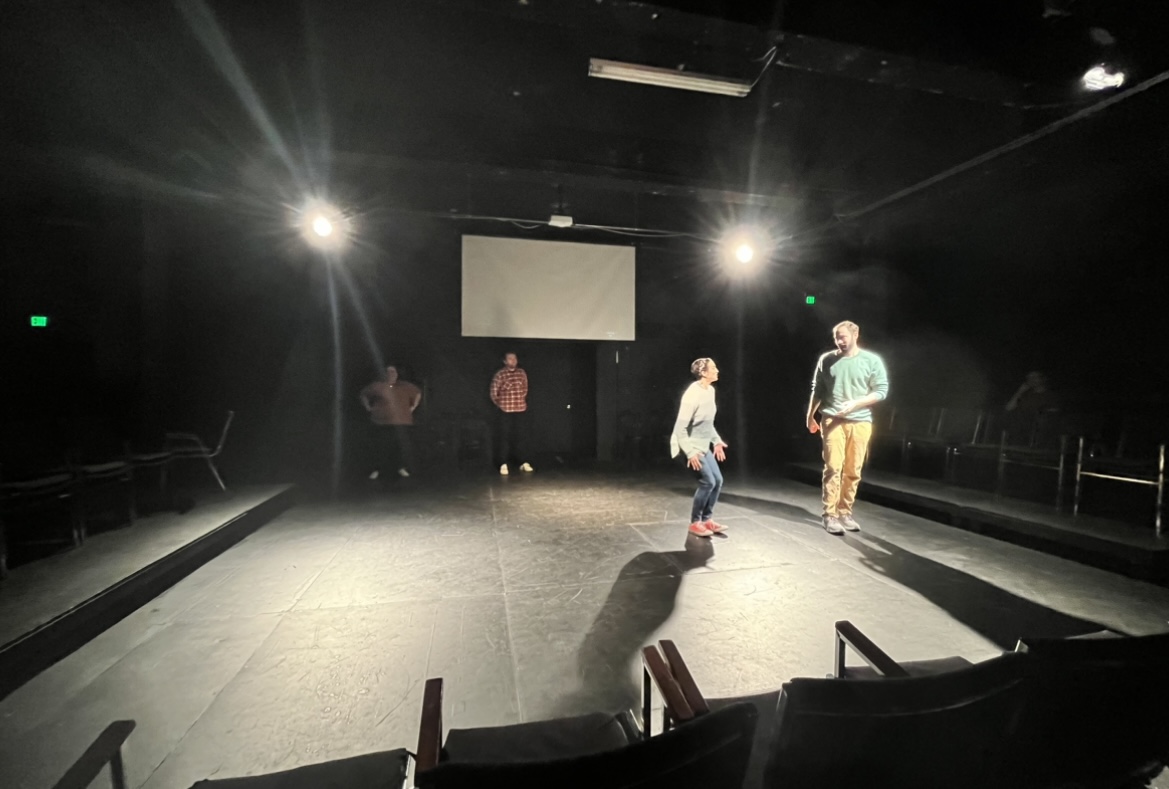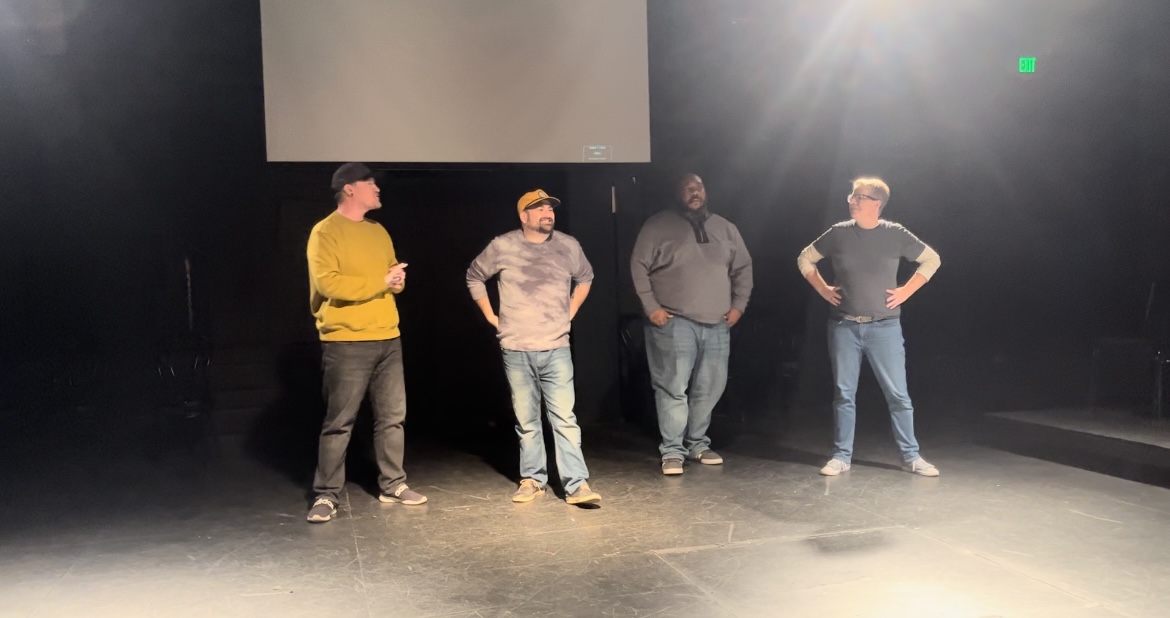Analysis of the Shows
Analysis of the Shows
In the first performance team, they began by taking suggestions from the audience, which added an element of fun. Based on these suggestions, they associated words to shape the first scene. One of the scenes that left a strong impression on me was about the PTA. Through the actors’ portrayal, I could sense very distinct character traits. The scene primarily involved a conversation between a mom wanting to fit into the PTA and a dad who was indifferent to it. In this scene, the mother’s character was serving as an “improvised character”, Initially, the mother felt sad about no one attending her birthday party, indicating her desire for social activities and recognition. The scene then progressed in a stepwise fashion, with elements of heightening and exploring. “Heightening” involved actions like “inviting the entire PTA”, which exaggerated and dramatized her character - for example, from simply attending the PTA to using her child to climb the social ladder within the PTA, even to hosting a PTA event. The actress portrayed a mother obsessed with the PTA, while “Exploring” offered rational explanations for these behaviors. The father’s character was calm, serving as the “straight man” in contrast. He pointed out the mother’s immature behavior and expressed dissatisfaction with her using their child for social climbing. The contrast made the characters’ personalities more pronounced. The actors also used a lot of body language. For instance, when the father said the mother was acting like a 14-year-old, she immediately started crawling on the floor. The portrayal was exaggerated yet logical. The scene also involved the participation of backline actors. For example, midway through, an actor came from backstage to the front to play their child. Finally they would end a scene following a burst of laughter from the audience.

The second performance team mainly created a discussion about the ethical treatment of animals. The mother’s role was a ‘character’, insisting on not using animal products, while another family member found cheese in the house, showing that the family members actually had different views on animals. The ‘heighten’ aspect was reflected in the discussion going from a simple talk about animal rights to someone sneaking squeeze cheese into a protest, and the family members’ conflict over the use of cheese. ‘Explore’ was evident as they also discussed how animal rights impact family life, such as educating family members on vegetarianism. The second team did a lot of ‘explore’ which was very rational, adding realism to the scene.
Theories of Improvisation
Heightening is an essential technique in improv, described on page 113 of the manual. It involves making a move in a scene that is more absurd than anything that has preceded it. This act of escalation serves to amplify the humor and absurdity in the scene. The technique pushes the established narrative to increasingly exaggerated and humorous levels, often resulting in unexpected and comically heightened situations.
Found on page 128, exploring delves into not just the actions occurring in a scene but also their underlying reasons. It’s about understanding and expanding on the motivations and implications behind the scene’s events. This process adds depth and context, making the scene more engaging and relatable. It helps in creating a coherent narrative that connects with the audience on a deeper level.
The Upright Citizens Brigade comedy improvisation manual.
Group Mind
In the PTA scene, the demonstration of group mind is evident through the seamless interaction among the performers. This is highlighted by a backline actor stepping out to play a child, with another character immediately responding, “Katie, go to your room,” showcasing an instant and natural connection in the dialogue. This immediate response and integration of a new character display the performers’ good collaboration and sensitive reaction to each other’s performance, a core concept in improv theater’s group mind.
Moreover, their interaction is also reflected in their mastery of the performance space. For instance, one performer standing on the left side of a chair and another immediately standing on the right, with the remaining two interacting with them from behind, is based on mutual listening - a crucial element of group mind. This approach is evident in both the heightening and exploring phases of the performance. For example, in heightening, a character may make exaggerated descriptions, and the straight man reacts accordingly, leading to further heightening. In the PTA scene, the mom creates and discovers the ‘game’ of the scene, and the performers collectively move from wanting to join the PTA to hosting a PTA event under the stimulation of group mind.
Similarly, in the second team’s performance, each of the four performers revolves around the theme of animal ethics, portraying characters with different viewpoints and reasons, demonstrating a strong sense of group mind in exploring the theme and beliefs.
Additionally, some backline actors contribute to the performance by adding sound effects, indicating their constant attention to the development of the story on stage. By prioritizing group mind, the groups aim to create performances that are more than just a collection of individual contributions. They strive to present something that feels organically created by the group as a whole, with each member contributing to and enhancing the overall narrative or theme being explored.
Feedback
First Team: The team captured attention effectively with strong emotions, and the actors’ belief and commitment were clearly evident. A suggestion for improvement would be to enhance interaction with the audience to create a more engaging experience.
Second Team: This team presented a meaningful story with excellent collaboration among the four performers, particularly excelling in the ‘explore’ aspect of their performance. However, it would be beneficial to introduce more ‘heighten’ elements to add an unconventional and surprising yet believable twist to the plot. Additionally, considering shortening the 30-minute story could maintain audience engagement, possibly by incorporating lighting changes during scene transitions, akin to the first team’s approach.
Insight and Reflection
New Insight: The show highlighted the importance of balancing ‘heighten’ and ‘explore’. Too much ‘explore’ can lack innovation, while too much ‘heighten’ might become overblown and less relatable. Mastering improv innovation is challenging. The “sep-con” articulation process is key to addressing this challenge, which includes:
- Motivation for creation.
- Deviating from convention to choose or build entities with independent functions and identities.
- Combining these entities while maintaining their distinct characteristics.
- Achieving a novel and harmonious whole.
Application in Improv Journey and Final Show:
In my improv journey and final show, I plan to innovate by applying the “sep-con” articulation process. It will guide my approach to heighten scenes creatively before delving into exploring them. Additionally, I will emphasize nonverbal communication, including eye contact, distance, and gestures, as a crucial aspect of my performance. This approach is backed by Ray Birdwhistell’s study, which suggests that nonverbal communication accounts for 60–70% of human communication, as detailed in “93% of All Communication Is Nonverbal?” . This combination of innovative storytelling and expressive nonverbal communication will be central to my performance.
